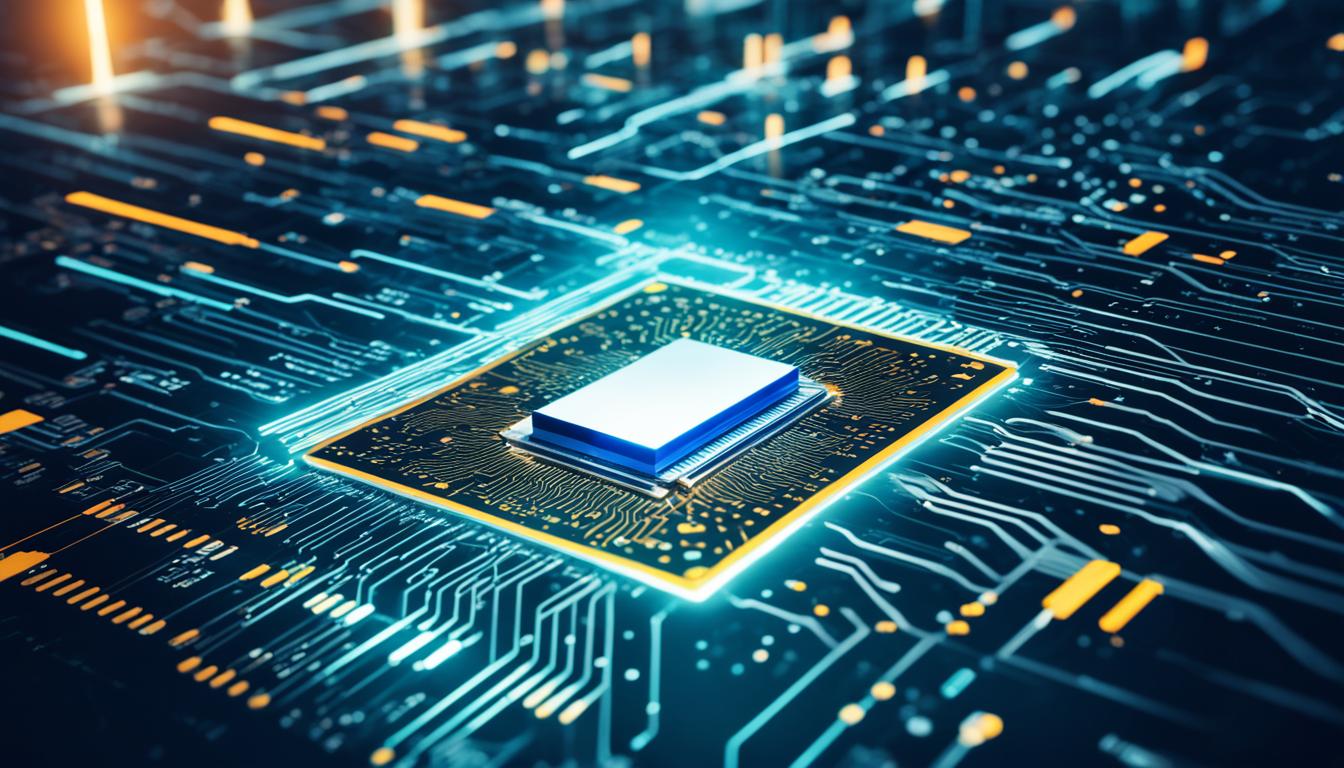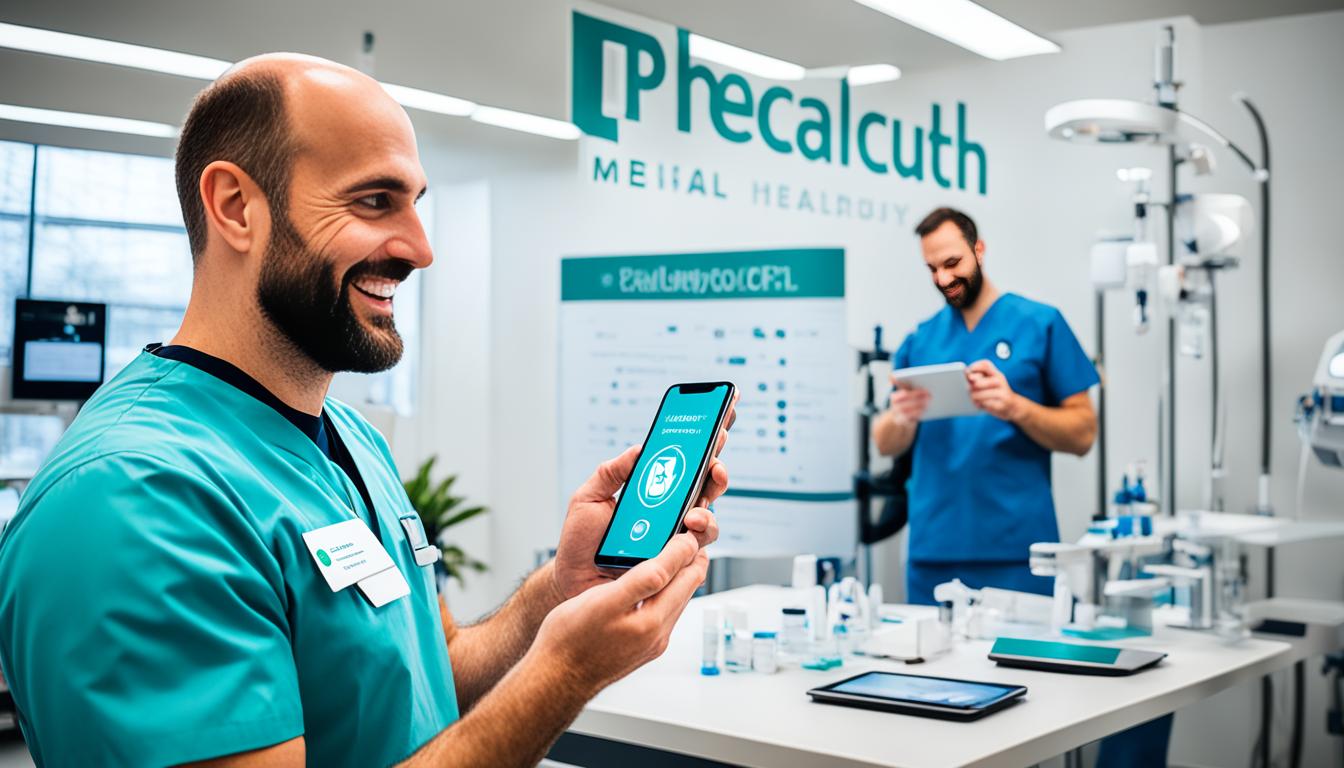Edge computing is changing how we process and understand data, bringing a new level of efficiency. With billions of devices making tons of data globally, edge computing tackles issues of centralized data handling. It does so by processing data closer to where it’s produced.
This new tech reduces the time data takes to be analyzed and acted upon. Instead of sending everything to big data centers, devices at the edge do the work. Think sensors and smart gadgets. This local processing also cuts down on delays, removes the need for speedy internet, and boosts data safety.
One big plus is it speeds up decision-making and reactions, perfect for things like self-driving cars and smart factories.
It also means less data is sent across the web, saving on network traffic and costs. Only what’s really needed goes to the cloud for deeper looks. This makes things run smoother and lowers the amount of infrastructure you need.
Edge computing is a game-changer in many fields. In healthcare, it allows for patient monitoring and handling medical info remotely. It fits right in with IoT. Transportation gets benefits too, like traffic updates, keeping vehicles running smoothly, and guiding self-driving cars. Even smart cities use it to manage energy, deal with trash, and up public safety.
As we close, it’s clear that edge computing is the future of handling data. It makes businesses more efficient, improves choices, and gets insights in real-time. It’s a must for those wanting to lead in our fast, data-focused world.
Key Takeaways:
- Edge computing enables real-time data processing and analysis by bringing it closer to the source.
- It cuts down on data delays and outgrows the need for fast internet.
- Edge computing saves on bandwidth costs and makes data transfer more efficient.
- Industries like healthcare, transportation, and smart cities see big benefits from edge computing.
- Using edge computing drives a jump in efficiency and better decision-making.
What is Edge Computing?
Edge computing is a new way to handle data, making it faster and more responsive. It’s different from sending everything to a central place for processing. This method processes data closer to where it’s made.
It is very useful for dealing with a lot of data from IoT devices. These are everywhere now, so quick data processing is a big need. Edge computing meets this need well.
It uses small, low-power devices near where the data is. These devices can process data themselves without sending it far away. This reduces delays and allows for quick decisions to be made.
One big plus of edge computing is it can work in areas with slow internet. It doesn’t need a strong internet connection all the time. This makes it perfect for remote places or where internet is not reliable.
Edge computing helps organizations process data faster. This means they can make important decisions quickly. It’s great for many tasks, like checking machine data in factories, watching the environment, or steering self-driving cars.

Real-time Processing with Edge Computing
One amazing thing about edge computing is its capability for real-time processing. Data is handled right where it starts, leading to very fast response times. This allows for instant analysis and insights. It’s very useful in urgent situations like in factories or healthcare.
Enhanced Data Security and Privacy
Edge computing also improves data safety and privacy. Since data is processed locally, it stays safer. This lowers the chances of data being stolen. Also, because data doesn’t travel far, there are fewer chances for it to be hacked during the journey.
So, edge computing is changing how data is handled. It makes data work better and helps make quick decisions. With edge computing, companies can get more from their data and still keep it safe.
Benefits of Edge Computing
Edge computing has many benefits that help improve how we handle data. It makes processing and analyzing data easier and faster. This is very useful for many tasks.
Reduced Latency for Real-Time Data Analysis
Reduce latency is one big plus of edge computing. It cuts the time it takes to send data to the cloud. This means you can look at data in real-time and act quickly. Businesses can make decisions right away, based on fresh data. This is a big advantage.
Enhanced Security with Proximity-Based Data Processing
Edge computing is also great for enhancing security. It keeps important data close, lowering the chance of hacks while sending. By processing data nearby, it stays safe. This eases worries for businesses, knowing their data is secure.
Cost Savings and Improved Efficiency
Edge computing lowers costs and makes work more efficient. It stores and processes data locally, cutting down on network use. This saves money and makes things run smoother. Work doesn’t need as much data moving around, which is a big win.
Using edge computing improves your speed, safety, and saves money. It lets you act quickly on data and make sharp decisions. This gives companies a boost, helping them stand out in today’s fast-paced world.

| Benefits of Edge Computing | Key Advantage |
|---|---|
| Reduced Latency | Enables real-time data analysis and faster response times |
| Enhanced Security | Keeps sensitive data closer to the source and minimizes the risk of breaches during transmission |
| Cost Savings | Reduces network congestion and bandwidth costs by processing and storing data locally |
| Improved Efficiency | Minimizes the amount of data transmitted over the network, resulting in improved data processing and analysis |
Applications of Edge Computing
Edge computing has changed many industries by allowing quick data processing near the source. This results in better efficiency and user experiences. Here are some main uses of edge computing:
Autonomous Vehicles
Edge computing is very important in making autonomous cars smarter and safer. It lets cars process data right there instead of at a distant server. This means cars can navigate, spot obstacles, and make decisions in real time. They rely less on the internet, making their choices faster and driving safer.
Industrial IoT
Edge computing is critical in the Industrial Internet of Things (IoT) for improving processes. It checks on sensor and machine data right where it’s made. This aids in watching over operations, guessing when maintenance is needed, and fine-tuning how things are done. It helps businesses work better, cut down on idle time, and use resources smarter.
Healthcare
In healthcare, edge computing is making a huge difference. It allows for watching patients from afar, connecting with doctors online, and diagnosing in a snap. Now, health pros can look at patient info when it’s freshly made, helping start treatment sooner. This quick, solid link is making healthcare better and faster.
Smart Cities
Smart cities rely heavily on edge computing to make choices based on data. It’s used for managing traffic, keeping people safe, and saving energy. By using quick data from traffic and environmental sensors, cities can save time, use resources better, and be greener. This makes living in these cities safer, easier, and good for the planet.
Retail
In retail, edge computing is offering a shopping experience that’s all about the customer. It suggests items in real-time that people might like, boosting their happiness and sales. It also keeps track of goods to make sure there’s enough and stop times when things are sold out. At checkout, it speeds up and secures the process, making shopping better for all.
Edge computing is reshaping many areas, from cars to healthcare and more. It lets businesses use data quickly to improve how they work and offer new solutions. This is making operations better and meeting the needs of our changing world.

Conclusion
Edge computing is changing the game in how we handle data. It moves data processing closer to where it’s created. This makes for quicker analysis and services that run without delays. It boosts efficiency and leads to new ways to innovate.
Its quickness and secure features are big pluses across many fields. These include self-driving cars, factory tech, health care, city planning, and shops. By dealing with data close to where it’s used, it cuts costs and keeps things fast.
As tech keeps getting better, edge computing will be key in data’s future. It allows for decisions to be made instantly and for very detailed analysis. This helps make things work better, pushes innovation, and makes using tech a better experience.
FAQ
What is edge computing?
Edge computing is about handling data close to where it starts, not somewhere far. This lets us process data right there, without needing fast internet.
How does edge computing work?
It uses small, efficient devices near the data spots. These gadgets deal with data on the spot. Then, they can send it for deeper checking in the cloud. This method makes processes quicker and more effective.
What are the benefits of edge computing?
Edge computing brings many good points. It cuts down waiting times, makes things safer, and saves money on big web connections. It lets us analyze data on the fly, get quick results, and keep important info nearer. So, the risk of data leaks is less while sending it out.
Where can edge computing be applied?
It’s useful in a lot of fields like self-driving cars, smart factories, health care, modern cities, and shops. This technology makes instant data checks possible. For instance, for finding the best route, fixing machines before they break, watching patients from afar, managing roads, suggesting stuff you might like, and much more.
What role does edge computing play in the future of data processing?
Edge computing is changing how we work with data, making things better and smoother. It’s key as our tech world grows. Edge computing will be a big part of how we process and understand data in the future.


